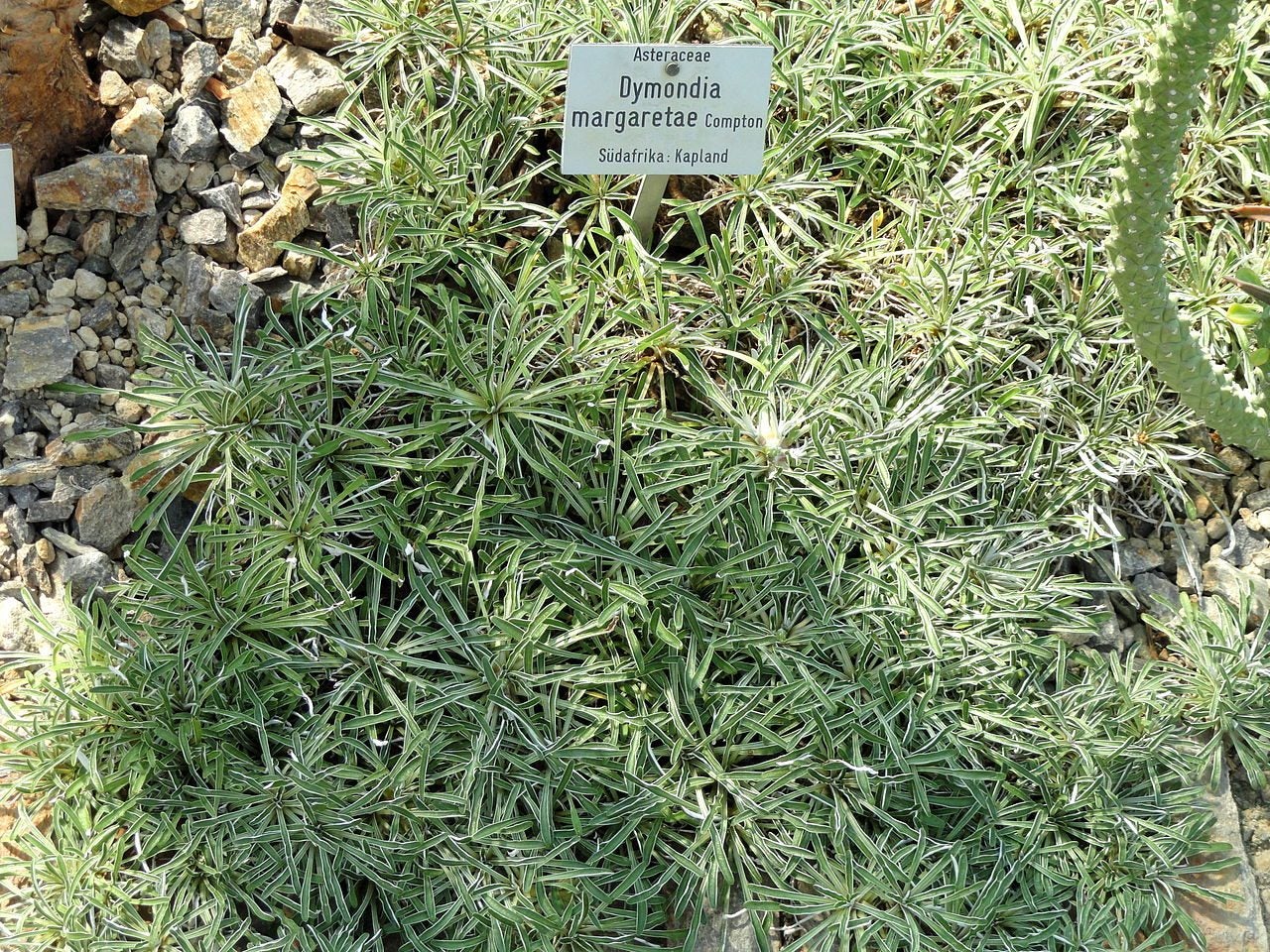Dymondia Lawn Care – Tips On Using Dymondia As A Grass Substitute


Drought is a serious concern across much of the United States, and many homeowners are looking for attractive, low-maintenance lawn substitutes. Dymondia (Dymondia margaretae), also known as silver carpet, is worth considering if you live in a warm climate – using dymondia as a grass substitute is suitable in USDA plant hardiness zones 9b through 11.
Dymondia Lawn Alternative
Native to South Africa, Dymondia consists of low-growing mats of narrow, grayish green leaves with fuzzy white undersides that give the plants a silvery appearance. In summer, this environmentally friendly plant produces masses of tiny, daisy-like blooms that are frequently visited by bees. Using Dymondia as a grass substitute isn’t the best option if your lawn receives a lot of activity, as Dymondia tolerates only light to moderate foot traffic. You can protect a Dymondia lawn by using flat paving stones to create walking paths through heavily trafficked areas, but if you have children that enjoy running and playing on the lawn, you may need a sturdier lawn alternative.
Growing Dymondia Lawns
Dymondia groundcover for lawns require full sunlight or light shade. Dymondia performs best in sandy, well-drained soil, and is easy to establish by planting flats, which are divided into small pieces and planted about 12 inches (31 cm.) apart. However, you can also plant seeds, or you can plant divisions from existing plants. Although Dymondia is extremely drought-tolerant, it requires regular water for the first six months. A layer of mulch will help keep the soil moist while the plant becomes established and spreads to fill in bare spots.
Dymondia Lawn Care
After the first six months, Dymondia is drought-tolerant; however, it benefits from an occasional watering when weather is especially hot and dry. Dymondia never needs mowing, but division will keep the stand vibrant and healthy if the plants eventually become overcrowded.
Sign up for the Gardening Know How newsletter today and receive a free copy of our e-book "How to Grow Delicious Tomatoes".

A Credentialed Garden Writer, Mary H. Dyer was with Gardening Know How in the very beginning, publishing articles as early as 2007.